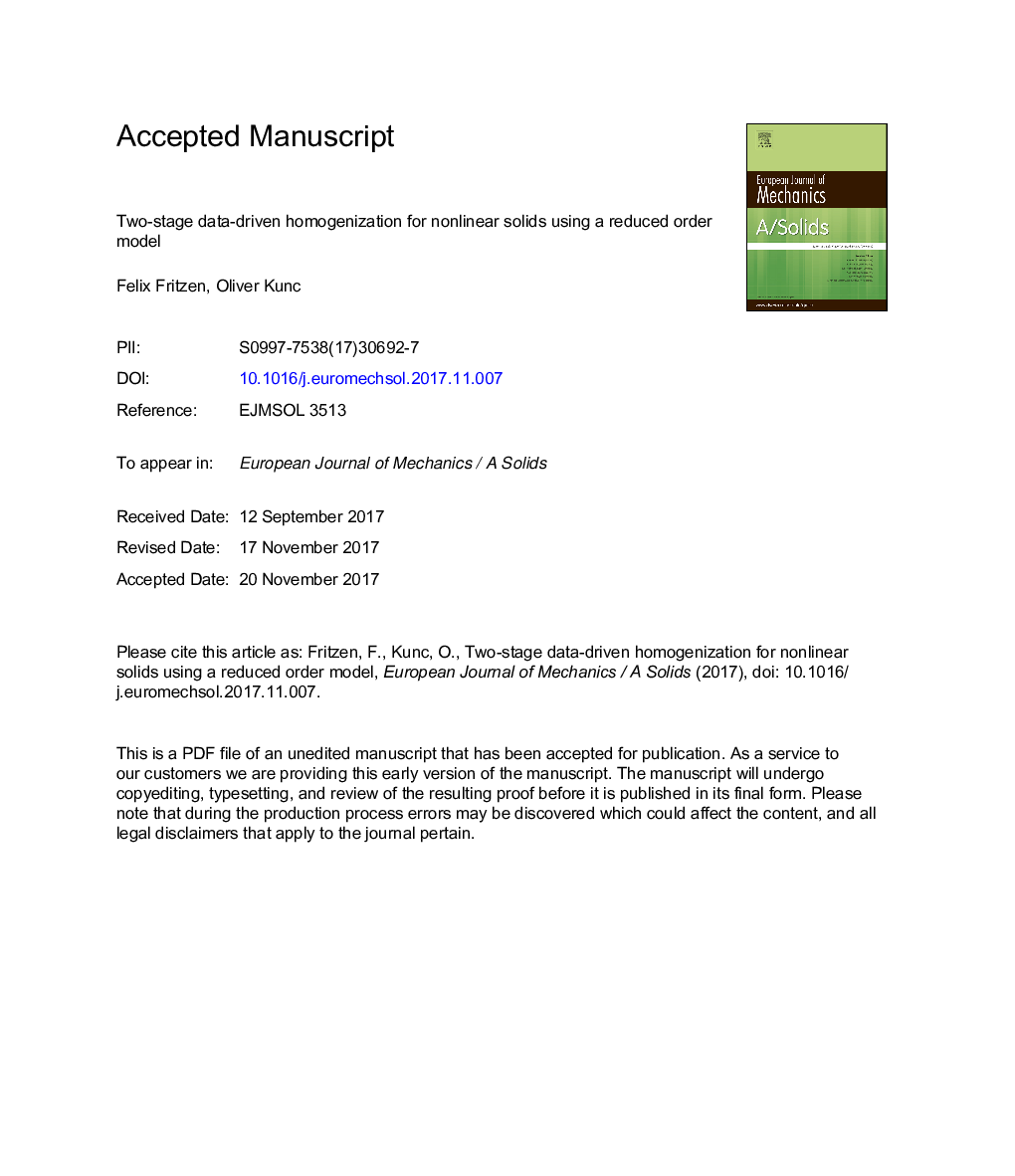| Article ID | Journal | Published Year | Pages | File Type |
|---|---|---|---|---|
| 7170265 | European Journal of Mechanics - A/Solids | 2018 | 35 Pages |
Abstract
The nonlinear behavior of materials with three-dimensional microstructure is investigated using a data-driven approach. The key innovation is the combination of two hierarchies of precomputations with sensibly chosen sampling sites and adapted interpolation functions: First, finite element (FE) simulations are performed on the microstructural level. A sophisticated sampling strategy is developed in order to keep the number of costly FE computations low. Second, the generated simulation data serves as input for a reduced order model (ROM). The ROM allows for considerable speed-ups on the order of 10-100. Still, its performance is below the demands for actual twoscale simulations. In order to attain the needed speed-ups, in a third step, the use of radial numerically explicit potentials (RNEXP) is proposed. The latter combine uni-directional cubic interpolation functions with radial basis functions operating on geodesic distances. The evaluation of the RNEXP approximation is realized almost in real-time. It benefits from the computational efficiency of the ROM since a higher number of sampling points can be realized than if direct FE simulations were used. By virtue of the dedicated sampling strategy less samples and, thus, precomputations (both FE and ROM) are needed than in competing techniques from literature. These measures render the offline cost of the RNEXP manageable on workstation computers. Additionally, the chosen sampling directions show favorable for the employed kernel interpolation. Numerical examples for highly nonlinear hyperelastic (pseudo-plastic) composite materials with isotropic and anisotropic microstructure are investigated. Twoscale simulations involving more than 106 DOF on the structural level are solved using the RNEXP and the influence of the microstructure on the structural behavior is quantified.
Keywords
Related Topics
Physical Sciences and Engineering
Engineering
Mechanical Engineering
Authors
Felix Fritzen, Oliver Kunc,
